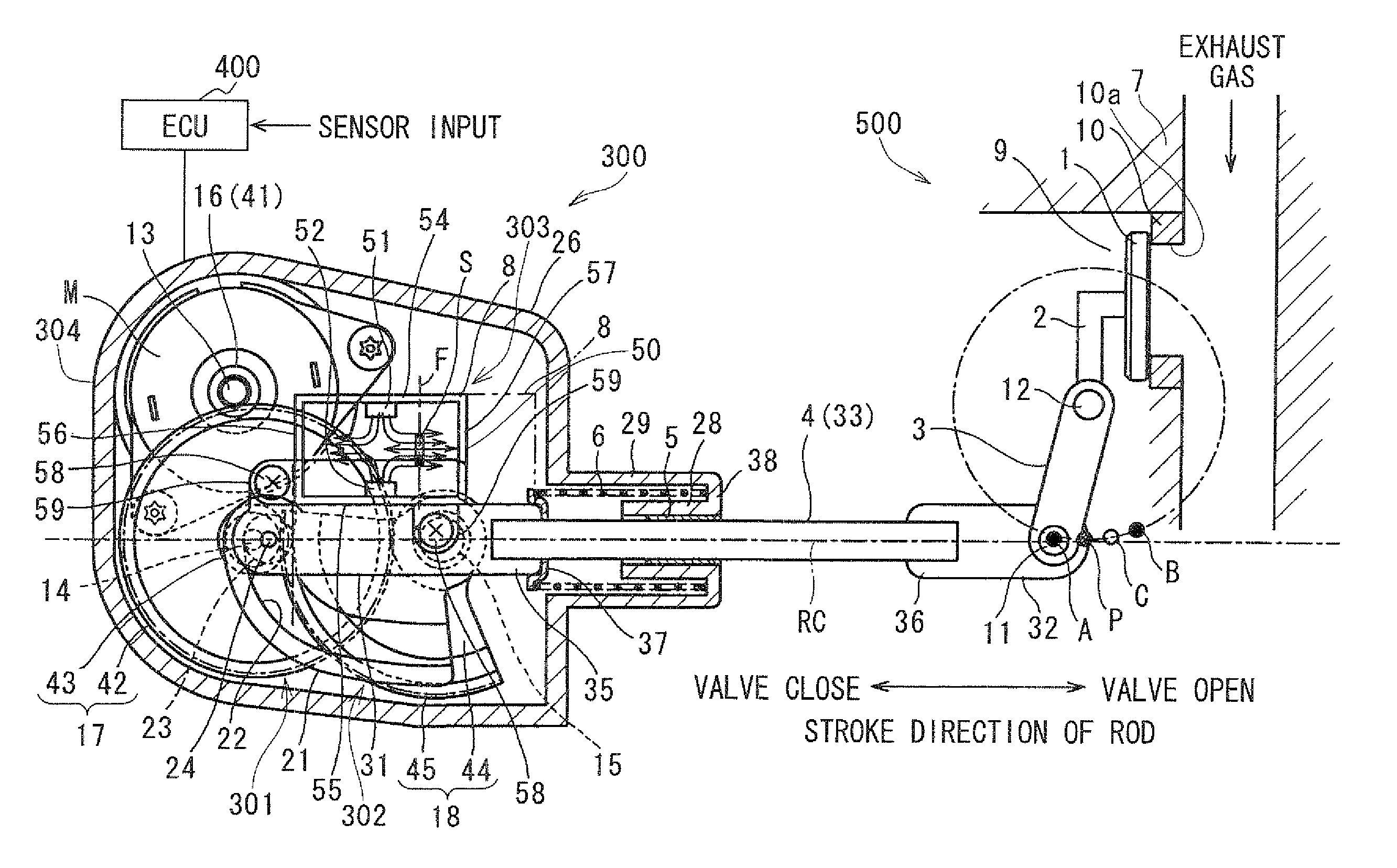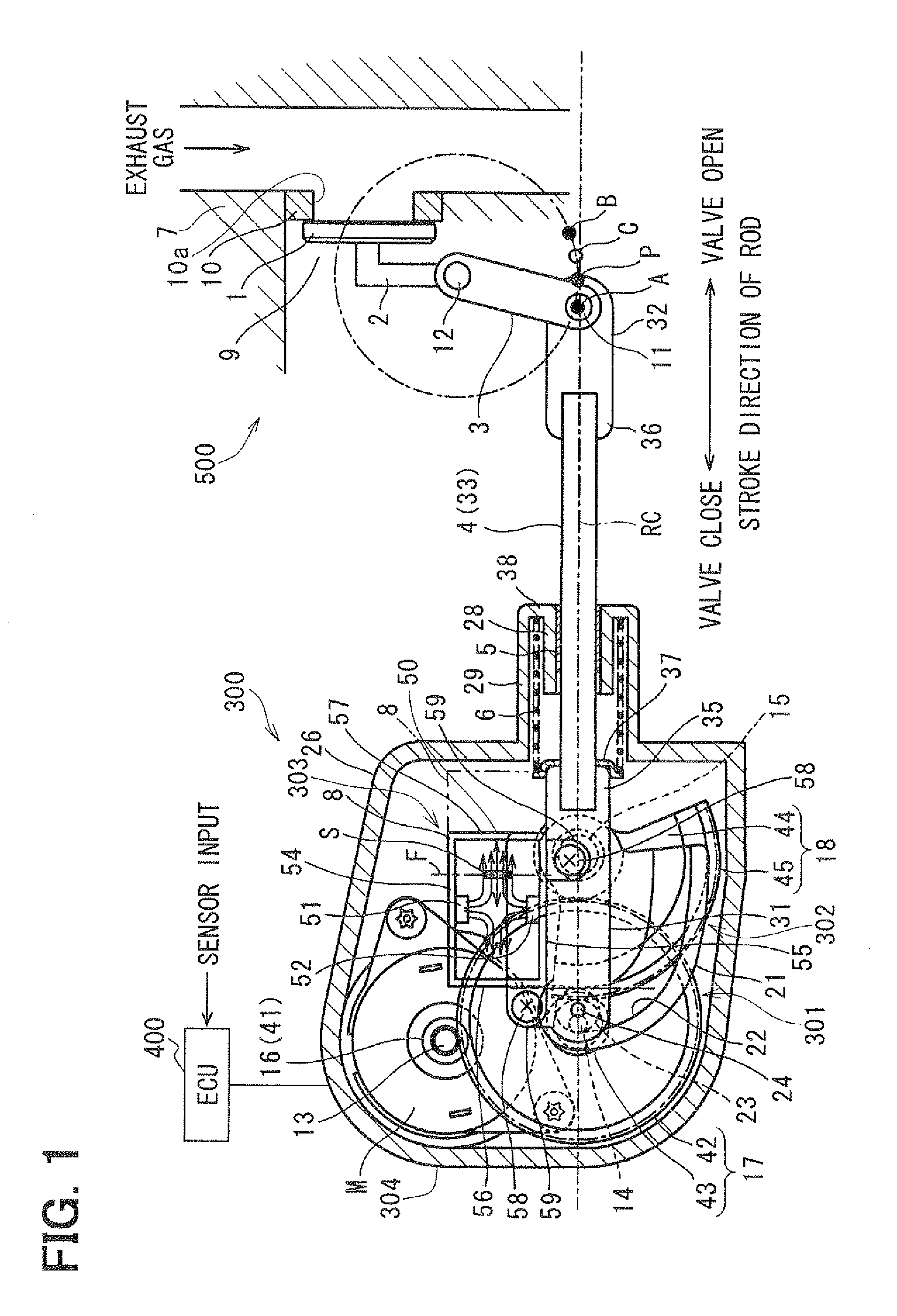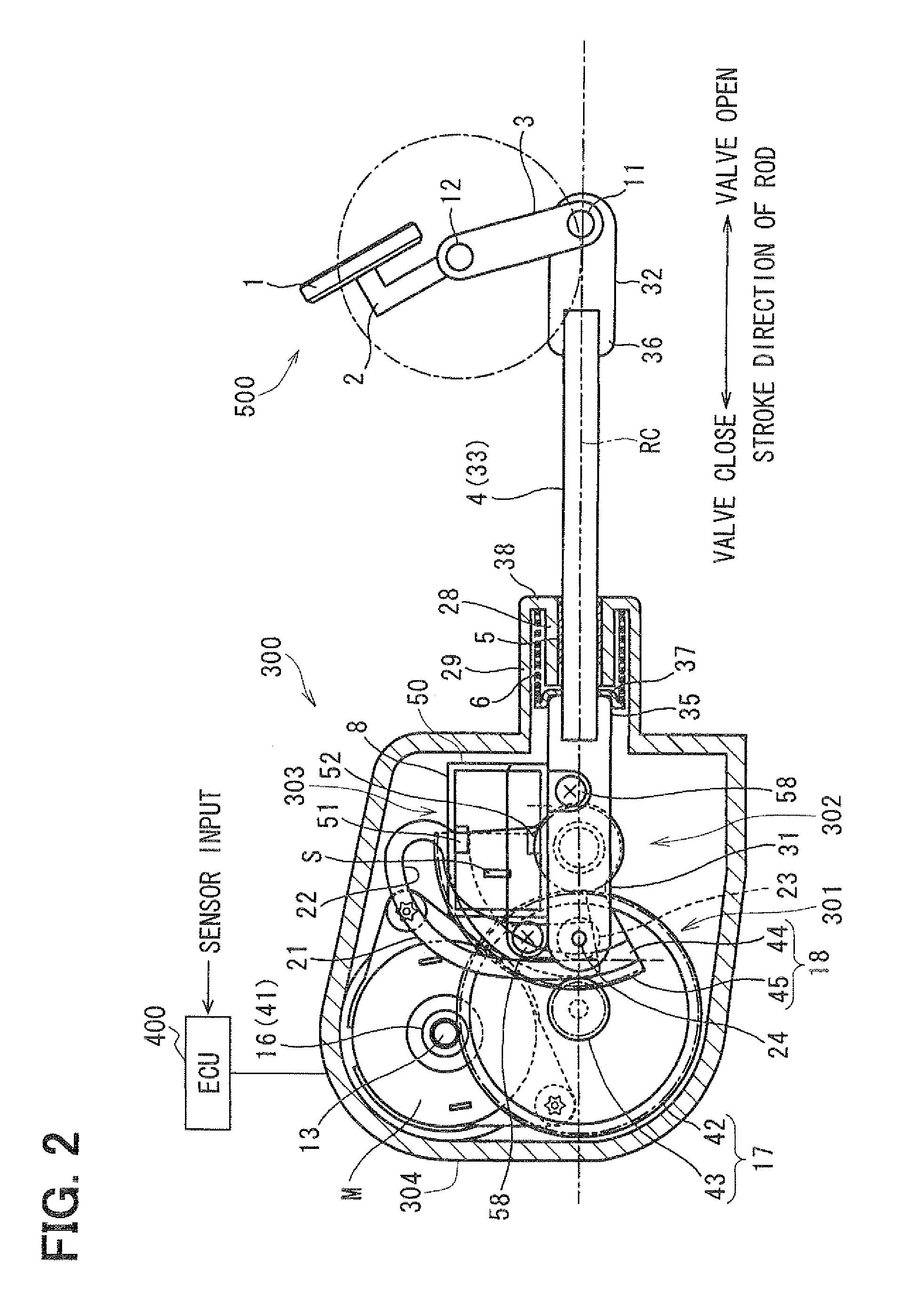Valve control apparatus
a valve control and valve technology, applied in the direction of valve operating means/releasing devices, machine/engine, service pipe systems, etc., can solve the problems of disadvantageous increase in sensing error
- Summary
- Abstract
- Description
- Claims
- Application Information
AI Technical Summary
Benefits of technology
Problems solved by technology
Method used
Image
Examples
Embodiment Construction
[0045]Now, an embodiment of the present invention will be described. FIGS. 1 to 78 show an embodiment of the present invention. Specifically, FIG. 1 shows a positional relationship between a link lever and a rod at the time of fully closing a wastegate valve. FIG. 2 shows a positional relationship between the link lever and the rod at the time of fully opening the wastegate valve.
[0046]A wastegate valve control apparatus of an internal combustion engine of the present embodiment is implemented in a boost pressure control apparatus of the internal combustion engine. The wastegate valve control apparatus includes a wastegate valve 1, a link mechanism 500, an electric actuator 300 and an engine control unit (ECU) 400. The wastegate valve 1 controls a flow quantity of exhaust gas of the internal combustion engine. The link mechanism 500 includes a link lever 3, which is connected to a shaft 2 of the wastegate valve 1. The electric actuator 300 includes a rod 4, which is connected to the...
PUM
 Login to View More
Login to View More Abstract
Description
Claims
Application Information
 Login to View More
Login to View More - R&D
- Intellectual Property
- Life Sciences
- Materials
- Tech Scout
- Unparalleled Data Quality
- Higher Quality Content
- 60% Fewer Hallucinations
Browse by: Latest US Patents, China's latest patents, Technical Efficacy Thesaurus, Application Domain, Technology Topic, Popular Technical Reports.
© 2025 PatSnap. All rights reserved.Legal|Privacy policy|Modern Slavery Act Transparency Statement|Sitemap|About US| Contact US: help@patsnap.com



